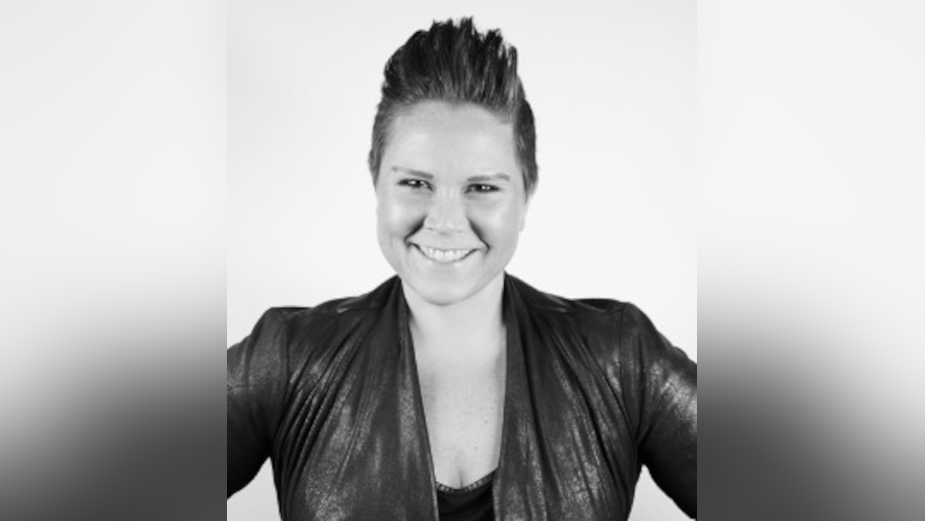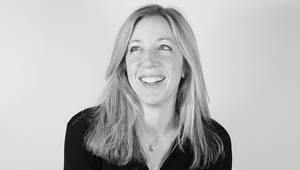
Planning for the Best: Pulling Inspiration from Consumer Behaviours with Anne Ryan

Anne has both insatiable curiosity and a sharp business acumen. As the vice president of brand strategy, this combination serves clients well as she works tirelessly to unearth the insights and strategies that will allow our clients’ brands to redefine categories, bond with their audiences, and, ultimately, increase sales. With over 18 years of experience in developing strategies for brands like IKEA, Wawa, Humana, and XFINITY, Anne inspires her team to push their strategic rigour, go deep, and only emerge when they believe they’ve landed on a truly transformative insight.
Prior to joining Brownstein, Anne served as the director of strategy and analysis for a digital marketing agency that focused on connecting B2B brands. She also spent the first half of her career implementing customer acquisition programs for financial services institutions, including Citibank and Capital One.
LBB> What do you think is the difference between a strategist and a planner? Is there one?
Anne> There’s absolutely a difference, and a big one. On one hand, strategists are focused on the strategy of the brand, which has nothing to do with a specific campaign. They are the ones doing research and interviews with various stakeholders to understand the differentiators, unique positioning and whitespace for the brand to own the market. On the other hand, planners take the evergreen strategy built by the strategists and bring campaigns to life on behalf of the brand. They’re considering factors like seasonality, current trends and consumer mindsets to advise clients on how to approach campaigns. Both are needed, but offer different skills to a brand.
LBB> And which description do you think suits the way you work best?
Anne> I really enjoy brand planning, because I can dive into current cultural moments and consumer mindsets to arrive at interesting campaigns. But I think that my experience lends itself best to brand strategy. This is because a successful strategist is very business-oriented and seasoned in having the hard and vulnerable conversations with C-suite executives. Over the last two decades of my career, I’ve interviewed and partnered with different personalities of C-suite leaders at Fortune 100 brands across consumer, B2B and private equity sectors. A lot of hard and vulnerable conversations had to happen, but that’s powered my experience in building brands. Because of that, I can think quickly, workshop on my feet and have those tough conversations that are required at the strategy level.
LBB> We’re used to hearing about the best creative advertising campaigns, but what’s your favourite historic campaign from a strategic perspective? One that you feel demonstrates great strategy?
Anne> My favourite campaign strategy dates back to the 1990’s. Subaru was launching its first luxury car and struggled to find success in the face of stronger national car brands with the power and reach to capture the market. When Subaru looked at their sales data to see who their main customers were, they identified four segments, one being “outdoorsy types.” When the marketing team reached out to these “outdoorsy type” customers, they found many were a female head of household, and with some light probing, that many identified as “lesbian.” Therein is the start of Subaru targeting lesbians in its advertising campaigns.
In an era of “Don’t Ask Don’t Tell” and brands pulling ads from the Ellen DeGeneres show when the comedian came out, it was a big deal that Subaru doubled down on a niche audience strategy with such a controversial target. But! Lesbians aligned with the brand and what the car represented, which is an understated, outdoor active lifestyle. And as a result, Subaru took a risk and represented lesbians in their ads, which is how Subaru has come to be known as “a lesbian car” today.
LBB> When you’re turning a business brief into something that can inform an inspiring creative campaign, where do you find the most useful resource to draw on?
Anne> People. Whether that’s people-watching in a public place, spending time on Reddit, perusing social media or reading online comments, people will always give you the most useful inspiration for any creative campaign. Your business brief will, of course, have specific objectives but at the end of the day, it’s meant to be received by people – so as a strategist, I’m always pulling my inspiration from consumer insights and behaviours.
LBB> What part of your job/the strategic process do you enjoy the most?
Anne> I thrive on the satisfaction of proving yourself to the client and becoming their “person” – the one they rely on for a quick workshop or impromptu advice. There really is nothing better than working hard to win the client’s respect whether that’s with a new client, a tricky tenured one or a prospect in a pitch process. Sometimes this even comes from missing the mark on an assignment, but showing that we’ve heard their feedback and are doing better the next time.
LBB> What sort of creatives do you like to work with? As a strategist, what do you want them to do with the information you give them?
Anne> I like to work with curious creatives who are genuinely interested in the subject matter and ask questions to get to the root of a brand’s intricacies. I’ve come across creatives in my career who have argued that they only need to know the very high-level details of any given assignment. But I don’t think that is true because those little nuances matter. Creatives who are hungry to understand how the nuance of the brand works, or those who like to nerd out with the strategy team on data and research – those are who I want to collaborate and be in the trenches with.
LBB> There’s a negative stereotype about strategy being used to validate creative ideas, rather than as a resource to inform them and make sure they’re effective. How do you make sure the agency gets this the right way round?
Anne> At Brownstein Group, our team truly respects the integrity of the advertising process. In fact, our creative team ensures that what they develop will resonate with the consumer mindset, while also reflecting the client’s ask. It’s ingrained in our culture that creative teams will never “go rogue” with a creative campaign that’s not rooted in strategy. From both the top-down and the bottom-up, we are an agency where everything is based on consumer insights – and we honour that as age-old advertising best practice. This is how we’re built; the creative team won’t even start a project without a brief from strategy.
LBB> What have you found to be the most important consideration in recruiting and nurturing strategic talent?
Anne> In recruiting new talent, I’ll typically pressure-test their love for advertising and brands by asking them to tell me about their favourite brands/campaigns – and why. Those answers will tell you a lot about their passion (or lack thereof). I’ll also ask them to look at a recent campaign and tell me what they think the strategic brief was for the campaign. The reason for that is that I want to see how they think and if they are coming from a place of conviction – if they truly have the innate belief that brands make a difference and ads matter in the world. Strategists really have to believe these things, because advertising is a gruelling industry at times and it’s important for me to know that they love the industry and have a passion for how brands show up in the world. The rest can be taught over time.
LBB> Do you have any frustrations with planning/strategy as a discipline?
Anne> My biggest frustration doesn’t particularly have to do with strategy as a discipline per say – rather that sometimes our reputation does not precede us! Let’s face it, the average person doesn’t know the amount of research that’s required on the back end of the ads they consume every day. And yet, we do an incredible amount of work to arrive at the briefs that inform those ads. We really dive in deep to make sure we’re positioning our clients’ brands in a way that commands the whitespace, which could mean days/weeks/months of research and interviews to arrive at a simply articulated brief. Strategists really are the silent warriors behind the most well-known campaigns in the world. Our work is not directly seen by consumers but we do so much work that informs these campaigns with often little recognition.
LBB> What advice would you give to anyone considering a career as a strategist/planner?
Anne> The best thing you can do is ask yourself: are you really serious about a career as a strategist, or are you just a strategic person? There are so many jobs in marketing/advertising and in other industries that are a fit for a strategic person. But a strategist is a very specific breed. To do this job, you must live in a world of going down rabbit holes, doing constant research and identifying patterns – and obsessing over nuance and detail. You have big conversations with your target audiences, clients and creative teams – so you also need to be willing to confront the most vulnerable parts of who you are.










